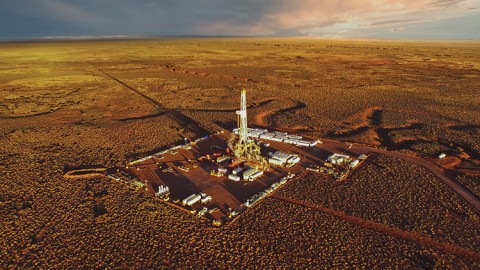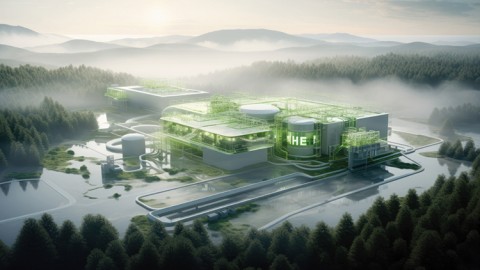To begin with, brownfield regeneration has been a very attractive topic in the oil and gas industry since the turn of the 21st century. With recent environmental regulations and frameworks pushing for land restoration and protection of contaminated sites, the oil and gas industry has faced tremendous pressure to comply with such requirements. However, before any brownfield site is redeveloped or regenerated for reuse, the brownfield must be effectively remediated from all potential hazards and toxins.
General Overview of the Current Brownfields in Egypt
Brownfields in Egypt have different uses across the industries. For example, while the oil and gas industry predominantly uses brownfield sites for relevant oil and gas-related projects, there are examples of brownfields that have been regenerated for transportation, building, and even industrial uses. Of course, each type of brownfield is regenerated in its own way due to the different contaminants involved as well as the potential level of contamination that could be overcome.
In Egypt, most brownfield sites are left abandoned after project completion or desertion. However, the main concern is not that these brownfield sites left abandoned, rather that it could lead to detrimental damage to the environment. In fact, it was suggested by an industry expert, who preferred anonymity, that “the oil and gas field has already understood that the redevelopment of brownfields is important and there are a lot of companies that do marketing to show how their companies take care of the environment before and after a project in the field. At the same time, this topic is extremely important and we should do our best to bring it to the attention of senior level executives to action the steps to work on the whole process of brownfield redevelopment”.
Over time, such brownfield sites could harm nearby habitats and inhabitants through unintentional seepage of toxic compounds. For instance, when certain oil and gas onshore projects are completed, the by-products that emerge from the processes are not properly disposed of, leading to potential poisoning of any nearby organisms.
Regeneration of Brownfields
However, other than the technical aspect of eliminating hazardous toxins, there are other technical and legal obstacles that must be addressed before regeneration of a brownfield site could take place. For example, one of the most important elements to consider is the current contamination percentage (i.e. the degree to which the contaminant has spread throughout the site) and the respective level of cleaning required. There are different levels of cleaning; for instance, the highest level of cleaning means that the site could be regenerated to be as it was before the project was initiated, while the lowest level of cleaning refers to the just removing or eliminating the necessary toxins to make the site safer than it was after project completion.
Another important element to consider is that of air and soil pollution. Due to negligence, some toxic or harmful petroleum by-products are either left unsettled or not disposed of. Based on this information, nearby communities or even oil and gas workers nearby are left susceptible to all the toxic odours that come about from oil and gas-based activities. Furthermore, some projects could result in the destruction of open space either that could be used by humans or other organisms. In fact, some activities could result in the damage of a site that, later on, would become damaged beyond repair or cannot be regenerated again to its original environmental state. These activities would not only affect air quality, but would also impact noise levels, destruction of land or offshore sites, a disturbance in the natural circle of life, etc.
The sources for some of the aforementioned environmental damagesinclude a variety of activities. For example, in the case of natural gas manufacturing, there are potential harmful products that could be dispersed into any nearby sources of surface water or aquifers.Additionally, in the case ofsetting-up gas stations, soil contamination is likely to occur during both the construction phases and during the operational and maintenance phase as well. Finally, during the generic cases of oil production – through oil rigs, wells, piping, storage, and even transportation of such products – the site in question is susceptible to numerous potential hazards and environmental pollutants that would not be taken care of without proper reprimands.
Advantages and Disadvantages of Brownfield Regeneration
While some of the advantages of brownfield regeneration are quite self-explanatory, it is necessary to understand that the advantages outweigh the disadvantages by far. For example, one crucial advantage of regenerating brownfields in the oil and gas industry is that it ensures the protection of the general public’s health and surroundings as threats are eliminated. Also, it creates a job market for employees working between the environmental industry as well as the oil and gas industry. Additionally, these locations are often well-situated and would be an investment to clean up and allow another industry (such as the building and infrastructure sector) to take over and put this, now deserted but environmentally safe, brownfield site to good use. This, in turn could revitalize social or urban communities yet again.
On the other hand, there are also a few disadvantages that must be considered and could not be left ignored.For instance, there are various costs that are typically associated with the regeneration process. These costs could include the equipment, machinery and labor work involved in the process of regeneration; these values vary depending on the level of restoration that the entity in question aims to achieve. Furthermore, the process of restoration is excessively time consuming, which, given the fast pace of the oil and gas industry, is considered to be financially straining by some. Also, there are no specific regulations or a local framework which the responsible entity could use as a reference to endure a smooth and efficient process. For this reason, it is difficult to have standardized regeneration processes as every entity or organization would have to form a loose set of standards to carry out the actual regeneration processes of the brownfield sites.
To conclude there are several reasons as to why the regeneration processes of the brownfield sites are becoming normalized, yet haven’t fully attractedthe adequate attention it requires. It is suggested that the existence of a regulatory framework for the oil and gas industry to use as a reference for the regeneration of brownfield sites, could encourage better and more effective care for the human health and quality of living as well as relieve the environment from toxins on all mediums, both onshore and offshore. Finally, while there are multiple advantages and disadvantages,it is universally acknowledged that the need for regeneration of brownfields is essential (not only in the oil and gas field, but in all sectors) to enhance landscapes and provide a better environment for the future.








